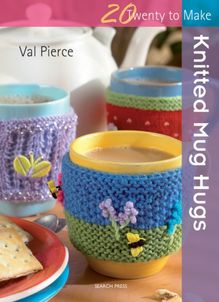-
 Univers
Univers
-
 Ebooks
Ebooks
-
 Livres audio
Livres audio
-
 Presse
Presse
-
 Podcasts
Podcasts
-
 BD
BD
-
 Documents
Documents
-
- Cours
- Révisions
- Ressources pédagogiques
- Sciences de l’éducation
- Manuels scolaires
- Langues
- Travaux de classe
- Annales de BEP
- Etudes supérieures
- Maternelle et primaire
- Fiches de lecture
- Orientation scolaire
- Méthodologie
- Corrigés de devoir
- Annales d’examens et concours
- Annales du bac
- Annales du brevet
- Rapports de stage
La lecture à portée de main
Vous pourrez modifier la taille du texte de cet ouvrage
Découvre YouScribe en t'inscrivant gratuitement
Je m'inscrisDécouvre YouScribe en t'inscrivant gratuitement
Je m'inscrisEn savoir plus
Vous pourrez modifier la taille du texte de cet ouvrage
En savoir plus

Description
Informations
| Publié par | Search Press Ltd |
| Date de parution | 21 mars 2011 |
| Nombre de lectures | 0 |
| EAN13 | 9781781260388 |
| Langue | English |
| Poids de l'ouvrage | 3 Mo |
Informations légales : prix de location à la page 0,0224€. Cette information est donnée uniquement à titre indicatif conformément à la législation en vigueur.
Extrait
Kate Haxell learned to sew at an early age, making clothes for her long-suffering teddy bears. She went on to study art and design and then worked for Country Living magazine. She moved into book publishing and, as an experienced freelance editor and author, Kate has worked on, contributed to and written numerous craft books. She lives in London with her husband, two dogs, two cats and a canary.
First published in Great Britain 2011
Search Press Limited Wellwood, North Farm Road, Tunbridge Wells, Kent TN2 3DR
Reprinted 2011
Text copyright © Kate Haxell 2011
Photographs by Paul Bricknell and Debbie Patterson at Search Press Studios and on location
Photographs and design copyright © Search Press Ltd 2011
All rights reserved. No part of this book, text, photographs or illustrations may be reproduced or transmitted in any form or by any means by print, photoprint, microfilm, microfiche, photocopier, internet or in any way known or as yet unknown, or stored in a retrieval system, without written permission obtained beforehand from Search Press.
Print ISBN: 978-1-84448-698-4 EPUB ISBN: 978-1-78126-038-8 Kindle ISBN: 978-1-78126-093-7 PDF ISBN: 978-1-78126-147-7
The Publishers and author can accept no responsibility for any consequences arising from the information, advice or instructions given in this publication.
Readers are permitted to reproduce any of the items in this book for their personal use, or for the purposes of selling for charity, free of charge and without the prior permission of the Publishers. Any use of the items for commercial purposes is not permitted without the prior permission of the Publishers.
Suppliers
If you have difficulty in obtaining any of the materials and equipment mentioned in this book, then please visit the Search Press website for details of suppliers: www.searchpress.com
Many thanks to Rebecca Clibbens for the use of her beautiful home for the photography in this book.
Contents
Introduction
Techniques
Almost Instant Bunting
Mini Bunting
Beach Bunting
Flower Power Bunting
Pom-Pom Bunting
Wild West Bunting
Christmas Tree Bunting
Name Bunting
Scalloped Bunting
Wedding Bunting
Pleated Fan Bunting
Valentine Bunting
Spots & Stripes Bunting
Bells & Tassels Bunting
Snowflake Bunting
Butterfly Bunting
Elegant Bunting
Flower Bunting
Groovy Bunting
Lavender Baby Bunting
Introduction
Long established as decoration for outdoor parties and events, bunting has a wonderful retro charm that is perfectly in tune with today’s fashion for the vintage look. No longer confined to the outdoors – and no longer needing to be miles in length – you can revel in bunting as seasonal and year-round decoration in any room in the house. Making your own allows you to use fabrics and trimmings that perfectly complement your room schemes. Best of all, bunting is quick and easy to make and is a great way of using up scraps from your fabric stash. You could also make the pennants and flags from the projects separately for individual decorations.
In this book you’ll find twenty bunting projects ranging from traditional pennants in shabby chic fabrics, to winter wonderland snowflakes, to breezy seaside-style flags. If you are looking for something sophisticated for an adult’s room, something quirky for a teenager, or something sweet for a baby, there’s a project here for you. If you like to whizz up a project on the sewing machine then you’ll find lots to choose from, but if you prefer some hand-sewing in front of a good film, then you won’t be disappointed in the range of ideas on offer. And whether you live in a colourful, boho house or a marvellously serene apartment, a beach house or a modern home, there are projects that will suit you and your style. Bunting really is for everyone.
All the designs are easy to make and some are super-speedy, too. The more elaborate designs will be effective in short lengths: five sparkling butterflies are all you need to create a statement in a girl’s room. You can even make up one individual pennant, and hang it singly on some ribbon or cord for a subtle but stylish look in any room. You need no special skills and all necessary templates are given on each project’s page. So there’s no excuse not to make a string of fabulous bunting this afternoon.
Techniques
Other than simple machine- and hand-sewing, the only techniques you need to know to make your own bunting are how to use the templates and how to clip curves, corners and points so that your flags and pennants lie flat.
Blanket stitch
1 Secure the thread on the back of the fabric. From the front, slip the needle through the fabric on the stitching line. Loop the working thread under the point of the needle.
2 Carefully pull the needle through and tighten the stitch. Continue working stitches in this way, tightening each one so that a strand of thread lies along the edge of the fabric.
3 Space the stitches evenly for a neat finish. To avoid distorting stitches or puckering fabric, pull the threads gently.
Chain stitch
1 Bring the needle through the fabric to the start of the sewing line. Take the needle back down very close to where it came up, then bring it back up to the surface at the end position of the first stitch. Loop the thread under the point of the needle and pull through. Adjust the stitch to make a neat loop.
2 Take the needle back down close to where it came up in the loop and bring it up at the end position of the next stitch. Loop the thread under the point of the needle and pull through.
3 Continue to create a chain of links and finish by catching the final loop with a small stitch to avoid the chain coming undone.
Stab stitch
1 Secure the thread and bring the needle up from the back of the fabric.
2 ‘Stab’ the needle straight back down very close to where you brought it up. Draw the thread through to make a small stitch, then repeat to create stitches close to each other or as instructed.
Slip stitch
1 Secure the end of the thread on the back of the fabric. Take the needle through just a couple of threads on the back of the ric-rac.
2 Pull the sewing thread through, then take the needle through the fabric, again picking up just a couple of threads.
3 As you work along the row of stitches in this way, pull the thread gently to keep the stitches taut. Don’t pull too hard or you will pucker the fabric.
Using the templates
You will find each template on the project’s page where required. Other than the three snowflake motifs, all the motifs given are symmetrical and only half the shape is shown. To make a full template, enlarge the motif on a photocopier by the amount stated in the project. Fold the paper down the dotted line then cut out the shape, cutting through both layers of paper.
Stitching and clipping points
Sew down one side of the pennant, stopping just before you reach the stitching line for the other side. (If you find it hard to judge the position of this stitching line, measure and mark it with a fabric marker before you start sewing.) Lift the presser foot and turn the fabric so that the foot is parallel to the top edge. Turn the hand wheel on the machine to make a single stitch, which should bring you to the second stitching line. Lift the presser foot again and turn the fabric to sew the second side of the pennant.
Trim the point off the pennant just below the stitching. Cut away some fabric from the seam allowances either side of the point.
Clipping corners
Trim the corner off the flag just beyond the stitching. Cut away some fabric from the seam allowances either side of the corner.
Clipping curves
Cut small wedges out of the seam allowances, cutting up close to the stitching. Space the wedges quite close together on tighter curves and further apart on softer ones.
Almost Instant Bunting
Materials:
Card for template
For each pennant: piece of cotton fabric measuring at least 9 x 13cm (3½ x 5in)
2.5cm (1in) bias binding the required length of the bunting, allowing for ties at each end
Sewing thread to match bias binding
Tools:
Pencil
Ruler
Paper scissors
Spray starch
Iron
Fabric marker
Rotary cutter with pinking wheel or pinking shears
Cutting mat (if using rotary cutter)
Pins
Sewing machine
Instructions:
1 On the card, draw a triangle 8cm (3¼in) wide across the top and 12cm (4¾in) from top to tip. Cut this out to make a template.
-
 Univers
Univers
-
 Ebooks
Ebooks
-
 Livres audio
Livres audio
-
 Presse
Presse
-
 Podcasts
Podcasts
-
 BD
BD
-
 Documents
Documents
-
Jeunesse
-
Littérature
-
Ressources professionnelles
-
Santé et bien-être
-
Savoirs
-
Education
-
Loisirs et hobbies
-
Art, musique et cinéma
-
Actualité et débat de société
-
Jeunesse
-
Littérature
-
Ressources professionnelles
-
Santé et bien-être
-
Savoirs
-
Education
-
Loisirs et hobbies
-
Art, musique et cinéma
-
Actualité et débat de société
-
Actualités
-
Lifestyle
-
Presse jeunesse
-
Presse professionnelle
-
Pratique
-
Presse sportive
-
Presse internationale
-
Culture & Médias
-
Action et Aventures
-
Science-fiction et Fantasy
-
Société
-
Jeunesse
-
Littérature
-
Ressources professionnelles
-
Santé et bien-être
-
Savoirs
-
Education
-
Loisirs et hobbies
-
Art, musique et cinéma
-
Actualité et débat de société
- Cours
- Révisions
- Ressources pédagogiques
- Sciences de l’éducation
- Manuels scolaires
- Langues
- Travaux de classe
- Annales de BEP
- Etudes supérieures
- Maternelle et primaire
- Fiches de lecture
- Orientation scolaire
- Méthodologie
- Corrigés de devoir
- Annales d’examens et concours
- Annales du bac
- Annales du brevet
- Rapports de stage









